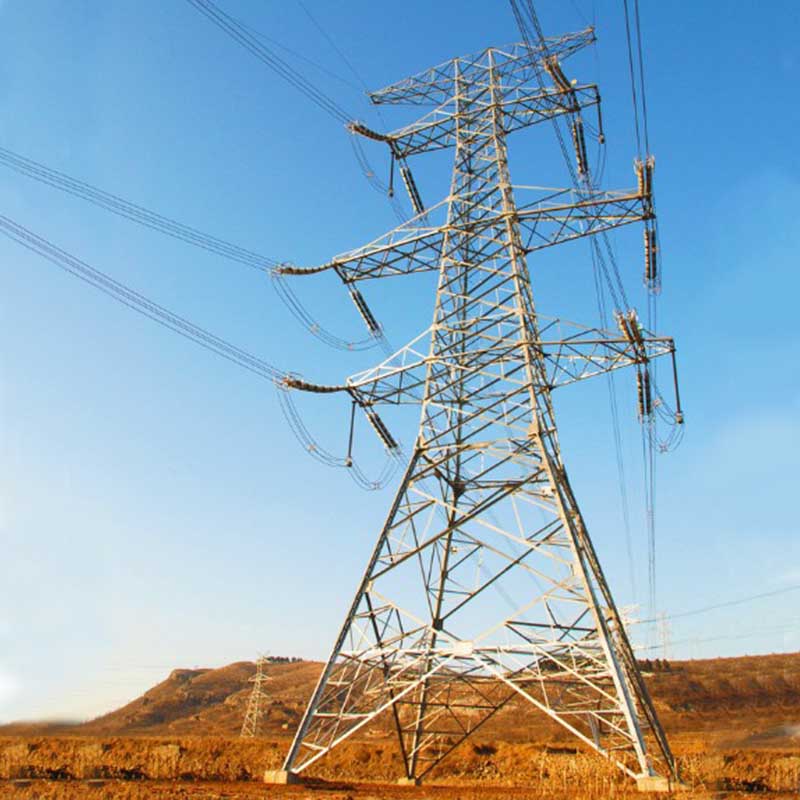Advancements in Galvanized Steel Structure Power Tower Technology: Shaping the Future of Energy Infrastructure
2024-04-10
Galvanized steel structure power towers have long been integral to the transmission and distribution of electricity, providing reliable support for overhead power lines across diverse landscapes. As technology continues to evolve, so too does the design, construction, and performance of these towering structures. In this blog, we'll explore some of the ongoing developments and advancements in galvanized steel structure power tower technology that may impact their future.
Evolution in Materials and Manufacturing Processes
One of the key areas of advancement in galvanized steel structure power tower technology lies in materials science and manufacturing processes. Engineers and researchers are constantly seeking to enhance the strength, durability, and efficiency of these structures while also minimizing their environmental footprint. Some notable developments include:
1. High-Strength Steel Alloys: Advancements in metallurgy have led to the development of high-strength steel alloys that offer greater load-bearing capacity and resistance to corrosion. These alloys enable the construction of lighter yet stronger power towers, reducing material usage and transportation costs.
2. Advanced Coating Technologies: Innovations in galvanization techniques and coatings are improving the corrosion resistance of steel structures, prolonging their lifespan and reducing maintenance requirements. Nano-coatings and self-healing coatings are among the emerging technologies being explored for their potential to enhance the durability of galvanized steel power towers.
3. Prefabrication and Modular Construction: Prefabrication and modular construction techniques are gaining traction in the fabrication of power towers, allowing for faster assembly and installation on-site. This approach not only accelerates project timelines but also improves quality control and safety during construction.
Integration of Smart Technologies
The integration of smart technologies is revolutionizing the way power infrastructure is monitored, managed, and maintained. Galvanized steel structure power towers are no exception, as advancements in sensors, communication systems, and data analytics are being incorporated to optimize their performance and reliability. Some notable developments include:
1. Remote Monitoring and Diagnostics: IoT (Internet of Things) sensors embedded in power towers can provide real-time data on structural integrity, temperature, and environmental conditions. This enables proactive maintenance and early detection of potential issues, minimizing downtime and improving overall reliability.
2. Predictive Analytics: Machine learning algorithms and predictive analytics are being used to analyze vast amounts of data collected from power towers and predict maintenance needs and failure risks. By identifying potential issues before they occur, utilities can optimize maintenance schedules and extend the lifespan of their infrastructure.
3. Automation and Robotics: Robotics and automation technologies are being explored for tasks such as inspection, maintenance, and repair of power towers. Drones equipped with cameras and sensors can conduct aerial inspections with greater efficiency and accuracy, reducing the need for manual intervention and improving safety for workers.
Environmental Sustainability
As the global focus on environmental sustainability intensifies, there is growing emphasis on making power infrastructure more eco-friendly and resilient to climate change. Advancements in galvanized steel structure power tower technology are aligning with these goals through initiatives such as:
1. Green Coatings and Materials: Research into eco-friendly coatings and materials for galvanized steel structures is underway, aiming to reduce the environmental impact of power tower construction and maintenance. Bio-based coatings and recycled steel alloys are among the innovations being explored for their potential to enhance sustainability.
2. Biodiversity Conservation: Incorporating features into power tower design that minimize impacts on wildlife habitats and migration corridors is gaining prominence. From avian-friendly tower designs to habitat restoration initiatives in project areas, efforts are being made to mitigate the ecological footprint of power infrastructure projects.
Conclusion
The future of galvanized steel structure power towers is shaped by a convergence of technological innovation, environmental stewardship, and evolving energy needs. From advanced materials and smart technologies to sustainability initiatives, ongoing developments are poised to enhance the design, construction, and performance of these essential components of the electrical grid. By embracing these advancements and fostering collaboration among industry stakeholders, we can build a more resilient, efficient, and sustainable energy infrastructure to power the future.



